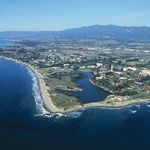- Home
- Lightroom Classic
- Discussions
- Re: Is there a properly functional viewer for DNG ...
- Re: Is there a properly functional viewer for DNG ...
Copy link to clipboard
Copied
I'm sure this topic has been done to death here and elsewhere, but I'm obviously dumb because I don't see the answer to my specific needs:
For personal reasons I'm frantically spending all my time scanning and processing a life time collection of slides going as far back as 60 years. LR is the obvious choice of Digital Asset Manager, but I cannot expect my children to have or even want to have LR to hand. The question of the format of the images that I leave for them is key. I'm sufficiently persuaded by Adobe's argument to choose DNG as output, along with jpeg for ease of use.
The 2 chief weaknesses of jpeg, in my view, are (1) that even when I select an output of 1920 pixels on the long edge, at 96 DPI (I'm not catering for Apple or Android devices), the jpegs might contain as little as 25% of the available pixels I've scanned from my slides. (I'm using a Nikon LS V ED, together with Vuescan). (2) the quality will be quickly corrupted if the images are viewed and saved multiple times.
So, DNG is important. It also allows them to properly re-edit the images if my children have the skills and software to do it. For ease of use the DNG files must be directly browse-able in Windows, especially as the Adobe DNG codec frequently referred to on the Internet appears to have been effectively hidden from me by Adobe. However, when I tried to view the DNG files exported from LR, with no embedded jpeg (I already have a big jpeg as a standalone file), using Win 10 Photos app. the results are unusable. Win 10 Photos completely misunderstands the image size properties. If I embed a jpeg then the image is viewable in Photos - but I'm only seeing the jpeg and not the full-fat file, so there's no point in exporting the DNG file.
If I switch to using a much more functionally capable image viewer - like IrfanView - the DNG files are browse-able with or without an embedded jpeg. But without the jpeg IrfanView presents the image as it is BEFORE adjustments have been applied in LR - and that's of no value to me or those that look at these old, colour-faded, dust-ridden slides. With a jpeg embedded, IrfanView shows me only the jpeg - again making the DNG file irrelevant.
So, how can DNG files be viewed correctly, and as LR intended, in Win 10?
 1 Correct answer
1 Correct answer
The only "viewers" that will show you the Lightroom edits embedded in the DNG file (assuming that's where the edits are stored, this is NOT a Lightroom default) are from Adobe. Specifically
Bridge
Photoshop/ACR
Photoshop Elements/ACR
Lightroom
if you are worried about your descendants being able to view your images without the knowledge you have, you need to export them as TIFF or JPG
Copy link to clipboard
Copied
The only "viewers" that will show you the Lightroom edits embedded in the DNG file (assuming that's where the edits are stored, this is NOT a Lightroom default) are from Adobe. Specifically
Bridge
Photoshop/ACR
Photoshop Elements/ACR
Lightroom
if you are worried about your descendants being able to view your images without the knowledge you have, you need to export them as TIFF or JPG
Copy link to clipboard
Copied
In addition to dj's post:
To show the unedited RAW, there's a DNG viewer from Adobe that also works with Windows 10: Adobe - DNG Codec : For Windows : Adobe DNG Codec 2.0 : Thank You
Addendum:
It does work with the Windows-PhotoViewer but seems not to play well with the new Win10 Photo App.
Copy link to clipboard
Copied
I know this is old, but for future Google searchers..
I would say your best bet is to just give in and include a full-size preview in the DNG.
If they know enough to edit an image, they'll either be knowledgeable enough to edit the raw OR simply end up editing the full-size jpg. Either way, they'll be able to edit SOMEthing. And for non-photo buffs, editing a jpg may be perfectly acceptable to them. We photo geeks seem to be a VERY particular bunch! ![]() But partially because we HAVE to be in order to be able to edit our images to our particular tastes.
But partially because we HAVE to be in order to be able to edit our images to our particular tastes.
You should also be able to delete the stand-alone jpegs, since the DNG will provide that purpose in place of them. Just be sure to "Update DNG Previews and Metadata" via the menu when you make appropriate changes to warrant it.
Find more inspiration, events, and resources on the new Adobe Community
Explore Now